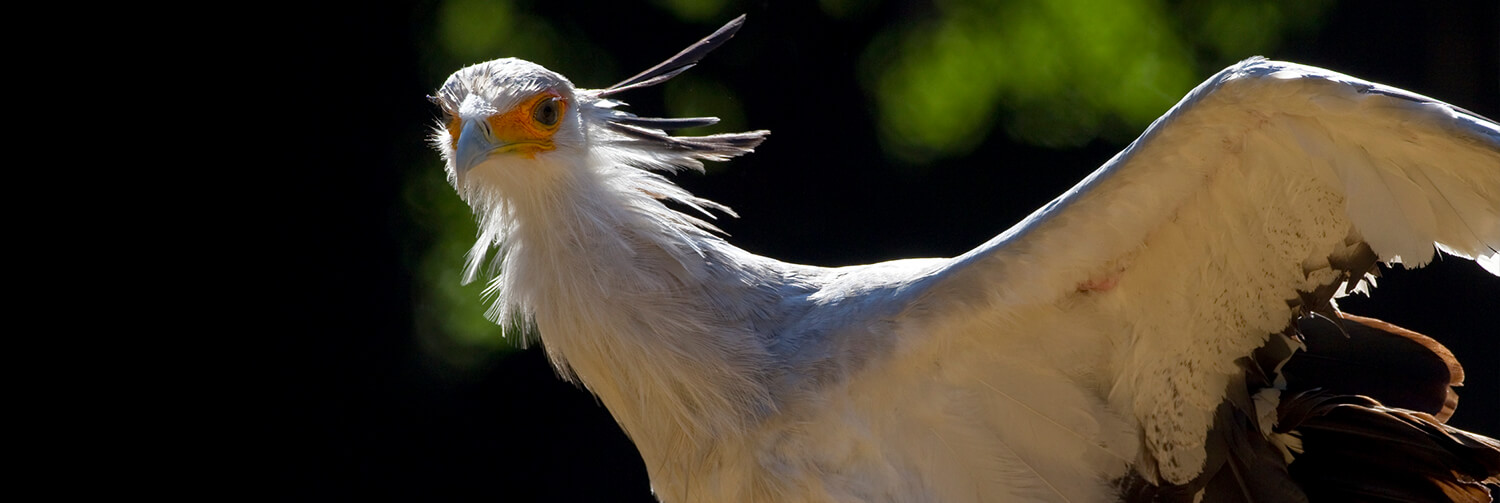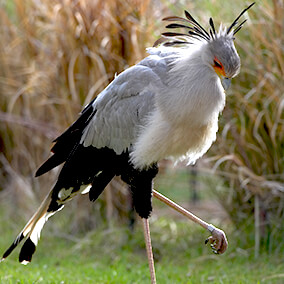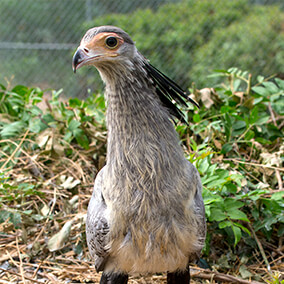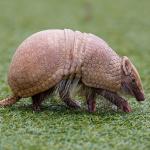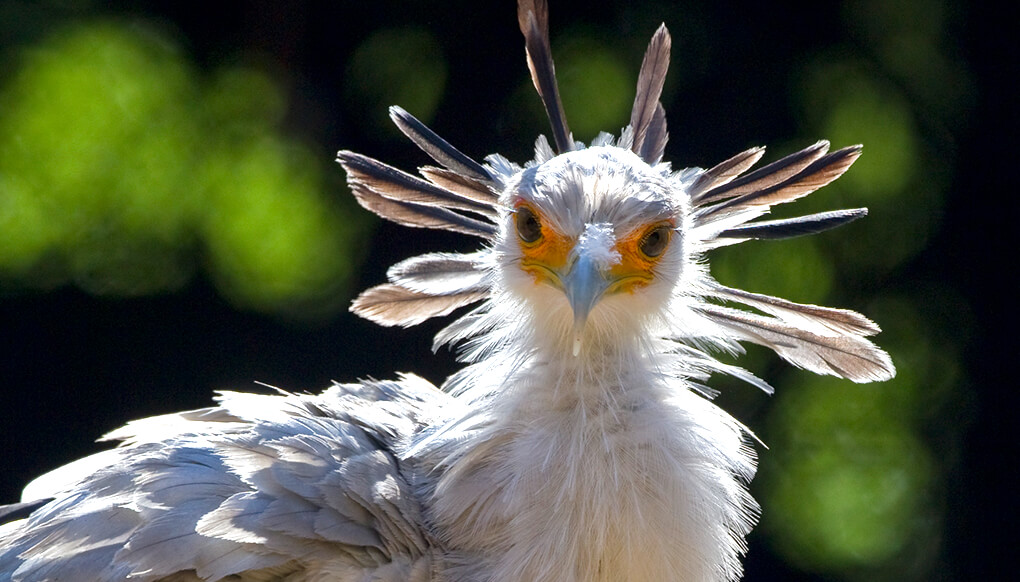
Secretary bird

Birds


Stable
facts

Secretary birds eat reptiles, birds, small mammals, and large insects.

description
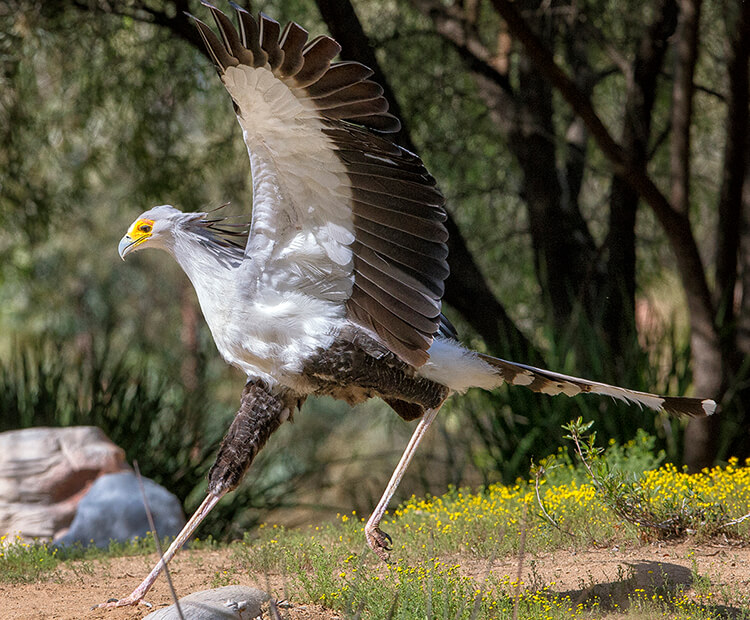
Going hunting
This bird’s forward-looking eyes and large, hooked beak are clues to what it eats—it’s a hunter! A secretary bird’s long legs help it move through tall grass in search of food. When it spies prey—like a snake, for example—the bird pounces and clutches it in its claws. Then the secretary bird pounds the prey against the ground to stun or kill it.
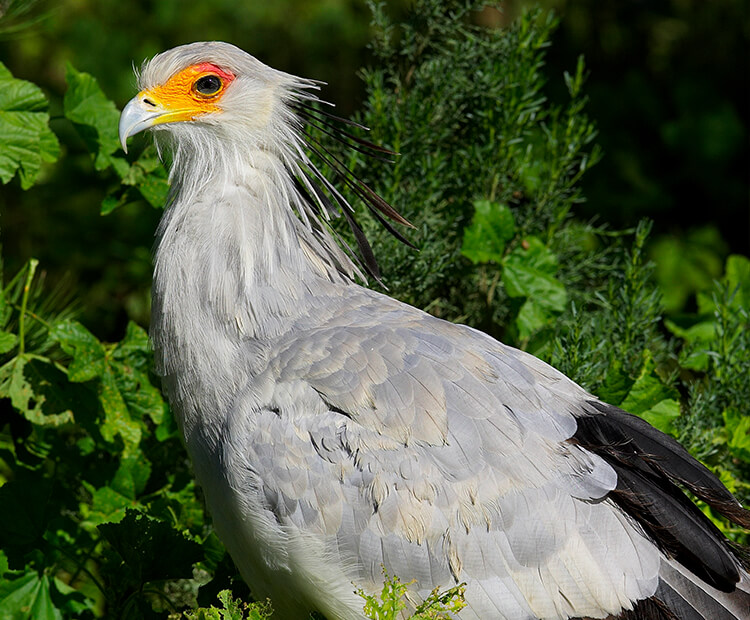
Making the rounds
Secretary birds search for food on the ground throughout the day. They roost in trees at night. They are usually quiet, but make croaking sounds when they are meeting a mate.
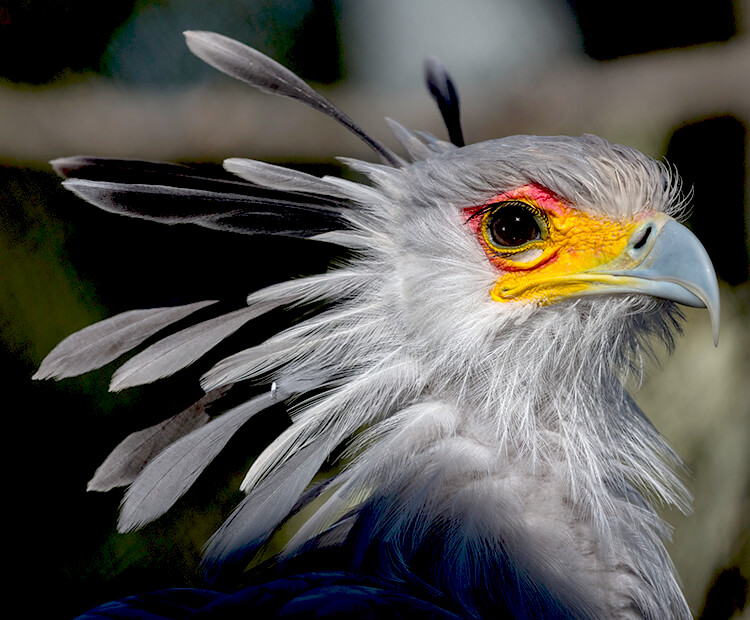
Ruffled feathers
Most of the time, a secretary bird’s long, dark head feathers lay flat against the body. But if the bird feels threatened, it makes the feathers stand up to make the bird look bigger.
Secretary birds are found south of the Sahara Desert, from Senegal east to Somalia and south to South Africa.

